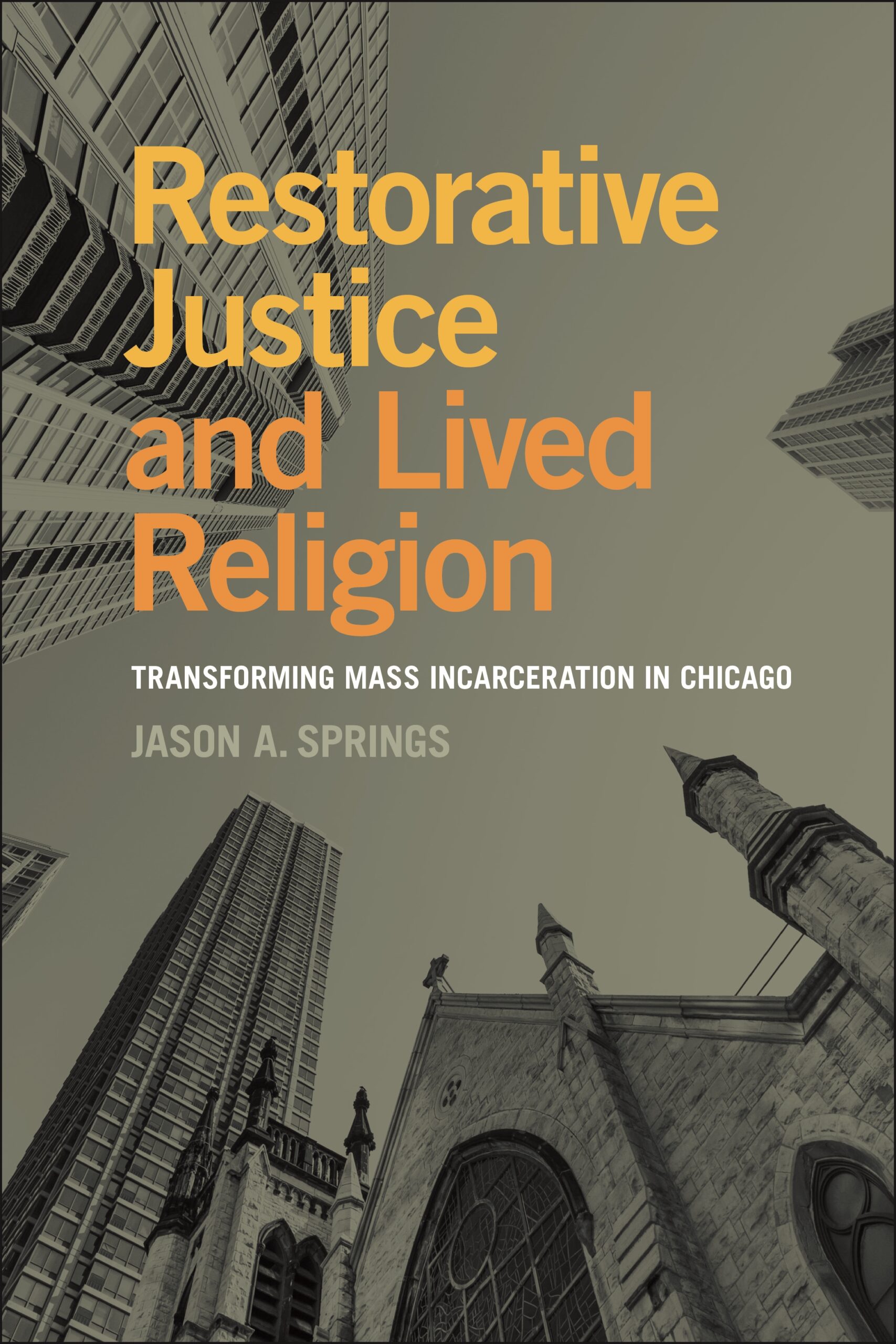 The concept of justice is attracting much theological reflection today. The current interest is in different kinds of justice for specific groups and issues, such as climate justice, civil rights, women’s reproductive justice, and economic justice, which are implicated with the others. This reckoning with justice is not new, of course. The history of Christian theology reveals a longstanding preoccupation with the concept. Justice is one of the preeminent divine attributes, as Paul writes in Romans 1:17. It was on this verse, in turn, that Luther concentrated his exegetical efforts, casting his reformation breakthrough as a new understanding of the iustitia dei: God makes the sinner just in Christ. The doctrine of justification in Luther’s theology thus connects God’s justice to human justice.
The concept of justice is attracting much theological reflection today. The current interest is in different kinds of justice for specific groups and issues, such as climate justice, civil rights, women’s reproductive justice, and economic justice, which are implicated with the others. This reckoning with justice is not new, of course. The history of Christian theology reveals a longstanding preoccupation with the concept. Justice is one of the preeminent divine attributes, as Paul writes in Romans 1:17. It was on this verse, in turn, that Luther concentrated his exegetical efforts, casting his reformation breakthrough as a new understanding of the iustitia dei: God makes the sinner just in Christ. The doctrine of justification in Luther’s theology thus connects God’s justice to human justice.
I bring a theological perspective that connects justice and justification to my introduction of this book symposium featuring Jason A. Springs’s recently published monograph, Restorative Justice and Lived Religion: Transforming Mass Incarceration in Chicago. Springs’s book, as the following responses concur, articulates a vision of justice-seeking that has political and legal dimensions, as the basic concept of justice denotes. But the social, religious, and spiritual forces of the book are its attributes that are most inspiring and generative. In fact, as Springs claims, the type of justice he is interested in, namely restorative justice, has to do with the building of social relationships that have spiritual and religious resonances. Restorative justice attends to the repair, restoration, and reconciliation of persons as they become connected to each other through the building of relationships. Springs studies peace-making circles in a particular community on Chicago’s South Side, namely the Precious Blood Ministry of Reconciliation, that was established to do the slow, careful, and delicate work of building relationships among persons who have been harmed by the political, legal, and executive actions producing the mass incarceration of Black persons. Sometimes such a peace-making circle, which usually centers on those harmed by police violence, also involves the perpetrator, such as a police officer, who has done violence to someone in the community. The restorative justice model transforms the perpetrator-victim relationship to one in which the perpetrator acknowledges their agency in harming another, while the victim (re)claims agency by narrating what they have experienced vis-a-vis the other. Repair, restoration, and reconciliation are the aims of the newly framed relationship. This model of justice focuses on cultivating personal relationships through an attentive awareness of the other. By means of such personal transformation, social transformation ensues. Justice is established in and through relationships, just as justification is the creation of reconciled relationships on the basis of the divine justice.
Springs’s book offers us the opportunity to reflect on justice in the polyvalent terms he deploys. The authors contributing to this symposium are cognizant of how the various aspects and areas of human existence in contemporary society—political, legal, cultural, environmental, and religious—contribute to either justice-denying or justice-seeking projects. Each author represents different approaches to theorizing about and advocating for justice. They show that the task of justice is central to our work as citizens, scholars, and practitioners in the arts of becoming persons to and for each other. The symposium attests to the intention of Springs’s book—that we take restorative justice seriously as a viable practice for social transformation. Whether that society is the community of researchers, as James Howard Hill Jr. notes, or a community of learners in prison, as Connie Mick describes, or a gathering of women advocating for the rights of pregnant women to choose to host a fetus for a time, as Rebecca Todd Peters relays, society is better served by intentional relationship-building that honors the agency and contributions of every person in it. Springs’s attention is on the local; yet the promise of restorative justice as he envisions it is global, for persons and for creation. Justice is for, and justice creates, what theologian Thomas Berry referred to as the “communion of subjects” (17). It is a glimpse of the divine justification intended for the entire cosmos—a vision of the reality in which Christ will have reconciled all things to God (2 Corinthians 5:19).
Our symposium begins with a methodological reflection on how scholars might embody the kind of justice they study. James Howard Hill Jr. begins by tracking the self-reflexive question: Do scholars perpetuate injustice, even as they study justice, by denying theoretical agency to the persons they study? Hill probes the genealogical deficit and theoretical limitations of scholarship in his field of religious studies. Black scholars tend to be marginalized from genealogies of the discipline and White scholars tend to restrict their theories to the critical traditions they have inherited. How can the academic community practice restorative justice for both its Black researchers and the Black persons studied? Hill presses us to think past a politics of citational practices or a model of inclusion that can be capriciously revoked under a new political regime. He asks us to imagine and to realize communities of researchers who search for truth about the world with each other. If scholars adopted practices of restoring relationships among themselves, their theories would cohere with their actions, and their quests for knowledge would embody the knowledge they learn from their neighbors.
Josh Lupo, meanwhile, is interested in the question of whether religions are to be regarded as traditions, and if so, how such traditions exist? The question of construing a religion as a tradition has to do with the inheritance of a nineteenth-century approach to religion, specifically Christianity, that privileged historical construction. A religious tradition is founded on an identifiable origin that then sets parameters into historical motion. Subsequent history exhibits traits of these parameters such that the tradition is recognizable as such throughout its different historical expressions. Lupo’s concern is whether the restorative justice model constructs religious sensibilities of a distinctive sort through its cultivation of relationships that might constitute a distinctive religious tradition. Lupo suggests that while this model is not a “tradition” in the above historical sense of the term, it has possibilities for sustaining spirituality through relationships that are both local and flexible. Even if spirituality is not explicit in discussions, it is central to them, in the senses that Springs identifies in his book. Furthermore, Lupo is interested in using this model to expand the restrictive and disciplinary notion of tradition as used by law-and-order politicians to make a case for the concept of tradition implied by restorative justice with its commitments to the human dignity of all participants, even as these practitioners of this model contribute to the tradition(s) of democracy.
The authors of the two subsequent contributions take their local experiences of restorative justice as points of entry. They both consider how Springs’s analysis is helpful in making sense of their respective experiences. Amy Carr is a theologian who, like Springs, uses critical theory, philosophy, and spirituality in her work. Focusing on the Keweenaw Bay Indian Community in the Michigan Upper Peninsula, Carr recounts the challenges this community faced when confronted with the prospect of constructing a casino on tribal grounds. Carr acknowledges that practices aimed at restorative justice are multi-pronged. They can aim at the elimination of polarizing elements, address the specific legal and political issues at play in the community, and frame discussions in ways that allow healthier forms of community to take shape. Carr’s conclusion reveals her theological rationale for addressing the pursuit of justice: restorative justice offers a glimpse of the Spirit’s work in rebuilding and repairing communities in which persons are honored, recognized, and cherished.
Connie Mick draws on Springs’s claim about the humanizing dimensions of restorative justice to reflect on her teaching experiences at Westville Correctional Facility, an Indiana state prison for men. Mick describes some of the conversational practices she has developed to nourish the teaching relationships she has with her students. She insists, for example, that the use of the present tense is important, speech that recognizes the presence of another. The obvious realities—that poverty and race and the prison-industrial complex are systems designed to strip personhood from persons—are mired in the logics of retributive justice. Mick shows how the model of restorative justice can engage in the “critical praxis” of discussing the systems of injustice—poverty and race—with those who have been harmed by these systems. The practice of storytelling serves to dismantle the singular narrative of retributive justice embedded in these systems, while opening the forum to new stories. In telling and listening to stories, the one story is decentered, mutual respect and recognition of each other’s personhood is nourished, and the possibilities of personal and social transformation are set free, at least for a glimpse.
This book symposium concludes with a contribution by Rebecca Todd Peters, who has dedicated much of her scholarly work in the field of Christian social ethics to the topic of reproductive justice. Todd Peters’s book, Trust Women: A Progressive Christian Argument for Reproductive Justice is one of the most important sources today for thinking about a Christian ethics of abortion (see her website as well), a work that also influenced my own thinking about the topic. Todd Peters shows how the systemic structure underlying the prison-industrial complex in the US is analogous to the interlocking systems at play in diminishing the personhood of women and in compromising their capacities to make decisions about the pregnancies they are sustaining. The retributive justice model currently operates in many US states. Laws are designed to punish women who make decisions to terminate pregnancies; these laws also entail grave consequences for women experiencing complications around pregnancy, such as miscarriage. They were behind the recent efforts in the state of Georgia to keep a brain-dead woman on life support in order to sustain fetal development. Todd Peters advocates for a restorative justice model that informs women about the different factors that converge on their decision-making processes. But she notes that the structural systems in place continuously devaluing women’s capacities to make decisions about their pregnancies need to be entirely dismantled. A social “revolution” guaranteeing full personhood to all pregnant women is required in order for the transformative impact of restorative justice to be actualized.
Restorative justice offers a glimpse of how a community can be transformed by justice. The orientation to restoration challenges the structural social and political regimes that reinforce injustice. It also offers possibilities of imagining transformed social worlds and how this transformation affects the natural worlds in which social worlds are embedded. The discourse of transformation resonates with the theological idea of God’s plan that the divine attributes are revealed in creation (Romans 1:20). The vision of transformative justice coincides with the revelation of the divine justice. Justice as the human work of seeking justice in the world is oriented to God’s work of revealing the divine justice in creation. The doctrine of justification, in other words, is about justice.

